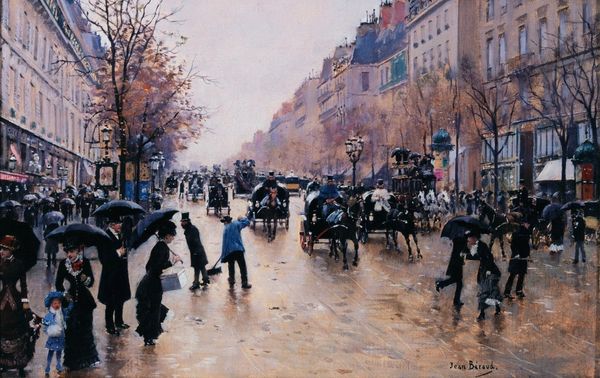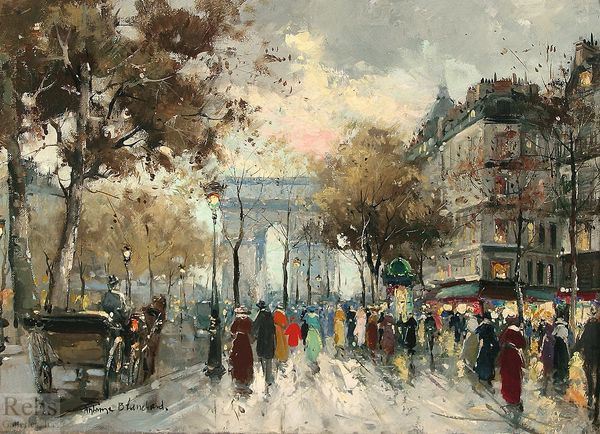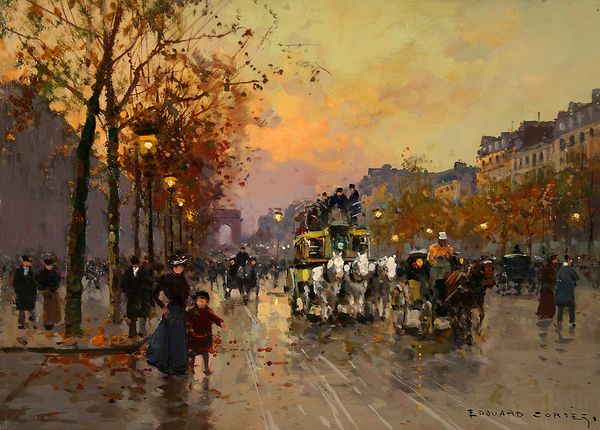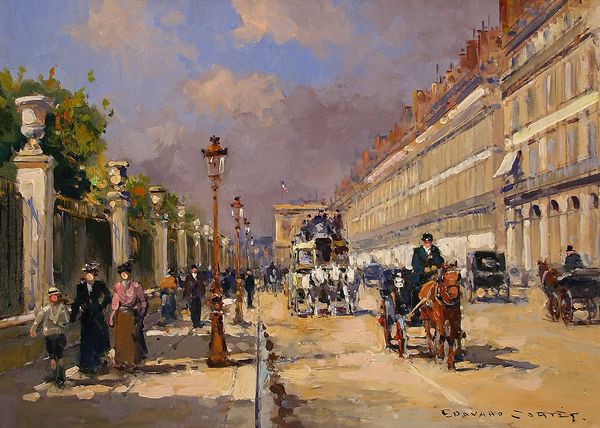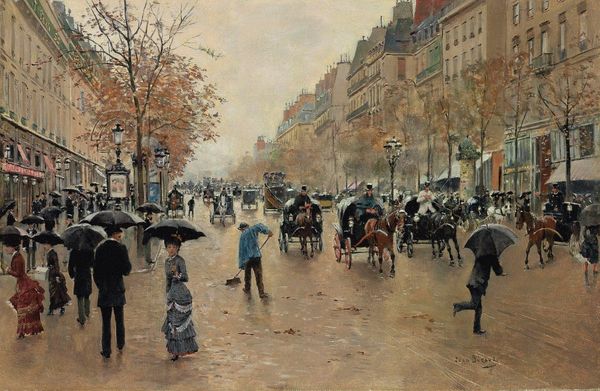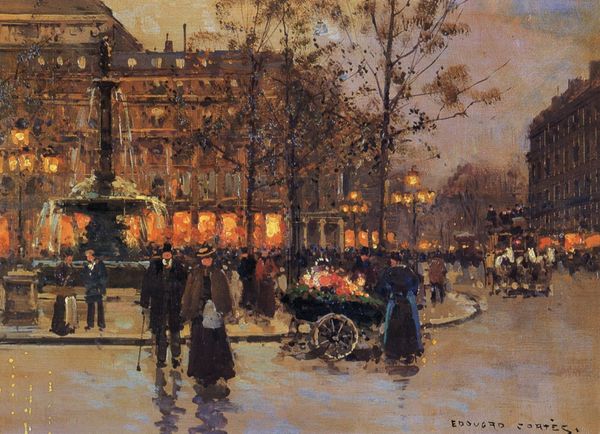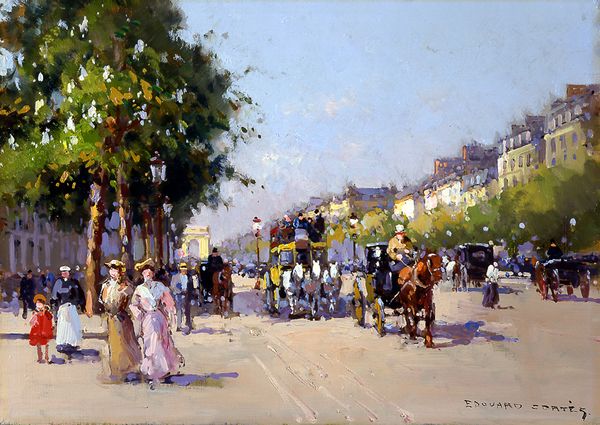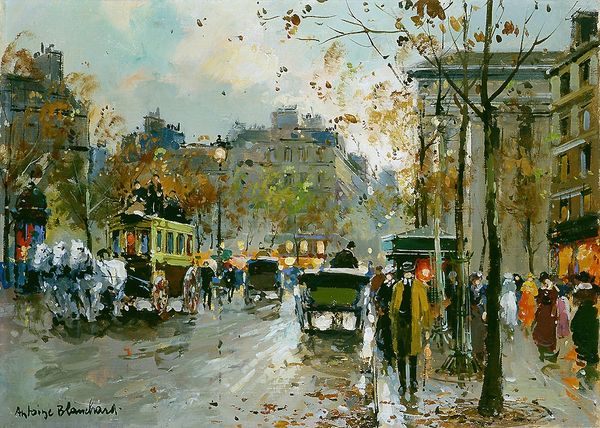
painting, plein-air, oil-paint
#
portrait
#
figurative
#
painting
#
impressionism
#
plein-air
#
oil-paint
#
oil painting
#
cityscape
#
genre-painting
#
portrait art
#
realism
Copyright: Public Domain: Artvee
Jean Béraud’s painting, Champs-Élysées, captures a bustling Parisian scene through a complex interplay of form and space. At first glance, the composition’s vertical trees and lampposts create a rhythmic division, framing the horizontal flow of carriages and figures. Béraud masterfully uses perspective, drawing the eye towards the distant Arc de Triomphe, thus structuring a visual hierarchy within the urban landscape. The muted palette, dominated by greys and browns, gives a sense of atmospheric depth and unifies the diverse elements of the scene. Yet, it's the subtle disruption of this formal order that intrigues. The slightly off-center placement of the main carriage, along with the asymmetrical arrangement of figures, destabilizes any sense of rigid symmetry. This interplay reflects a broader interest in depicting the dynamism of modern life, a theme prevalent in late 19th-century art. The painting doesn't offer a static view but rather invites us to consider the fleeting and contingent nature of urban experience.
Comments
No comments
Be the first to comment and join the conversation on the ultimate creative platform.

